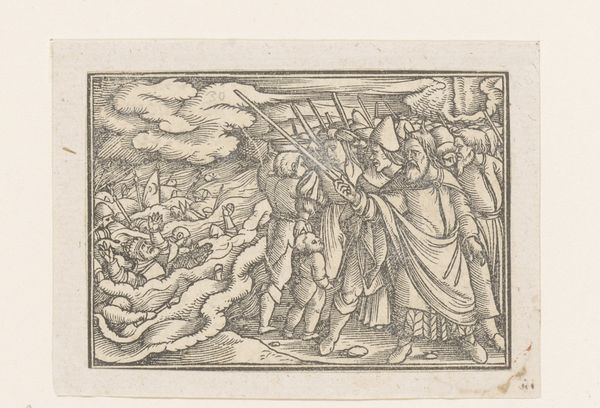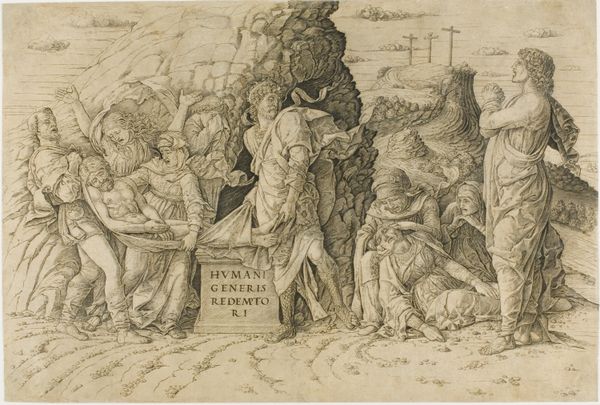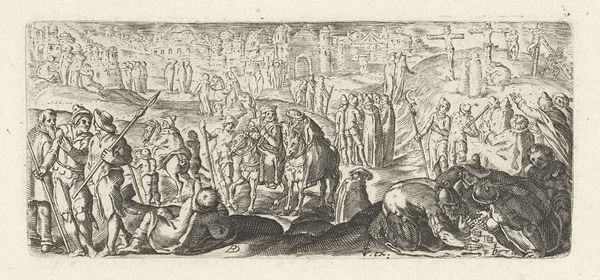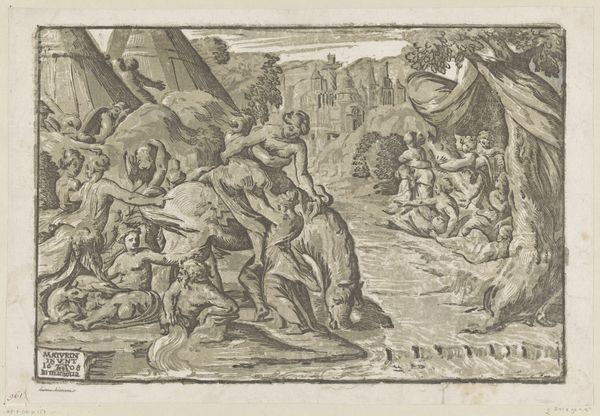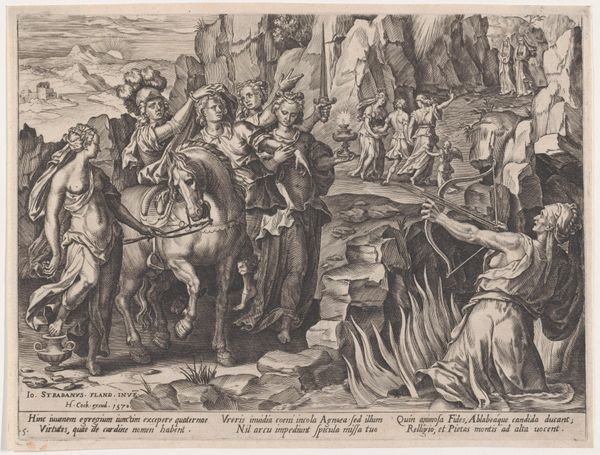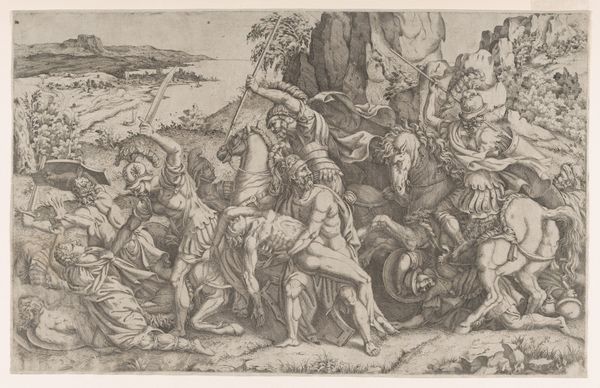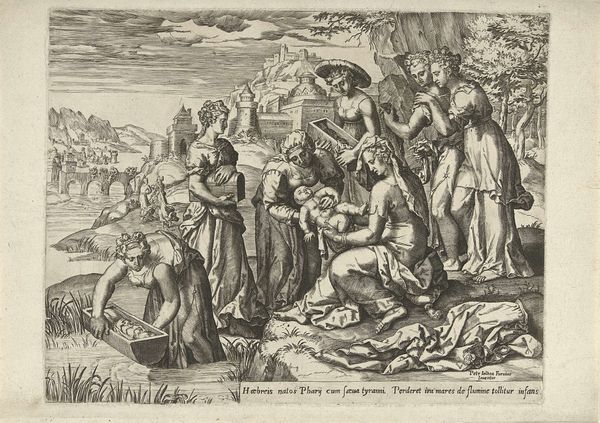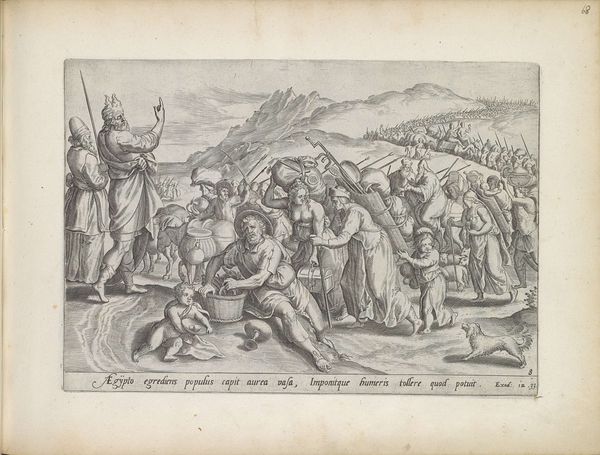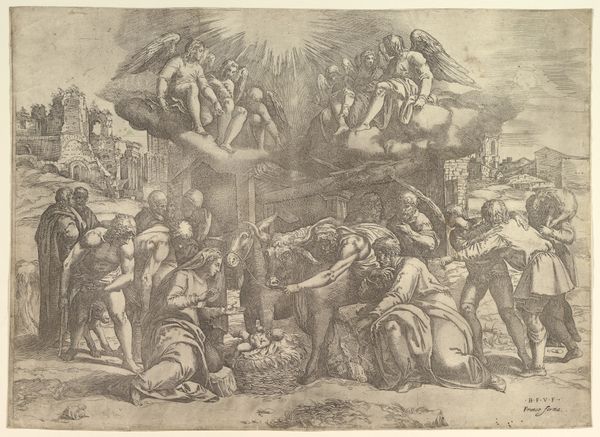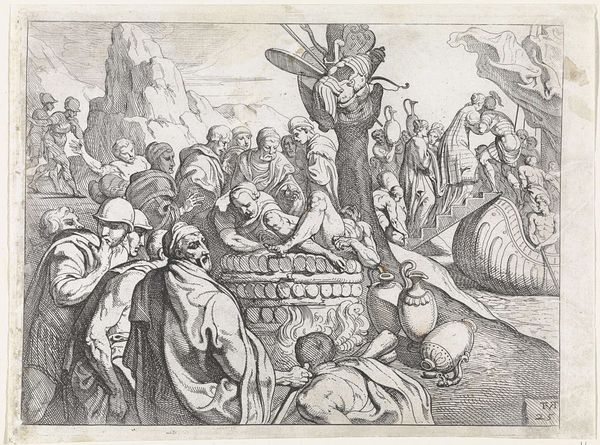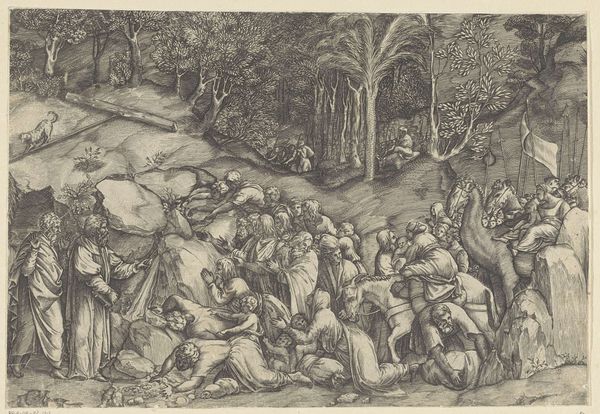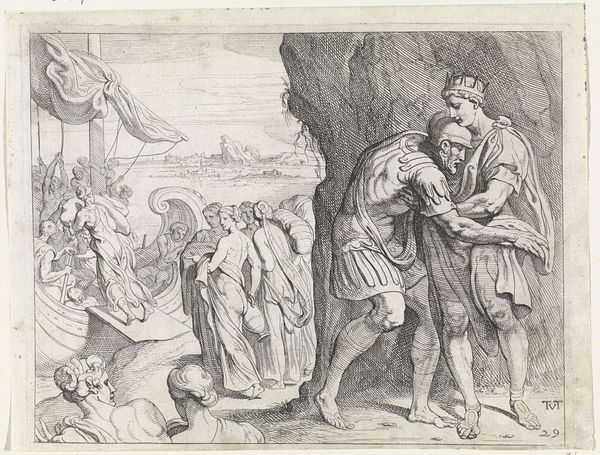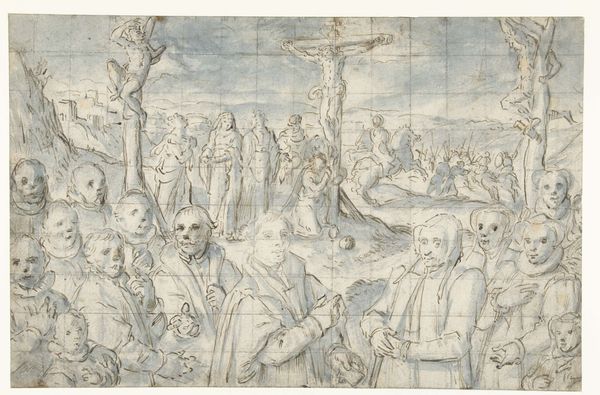
drawing, relief, ink
#
drawing
#
narrative-art
#
relief
#
figuration
#
11_renaissance
#
ink
#
history-painting
#
northern-renaissance
Dimensions: height 213 mm, width 280 mm
Copyright: Rijks Museum: Open Domain
Curator: Here we have “The Rescue of Saint Donatian,” a drawing in ink attributed to Lancelot Blondeel and thought to have been created between 1545 and 1550. Editor: Oh, this is a scene full of urgent activity and heavy robes. It feels theatrical, like a freeze-frame from a play. The figures are elegantly rendered, even in the midst of this chaotic rescue, caught mid-action as one man is pulled from a well or…some kind of watery pit. Curator: Exactly. Blondeel depicts the moment Saint Donatian, patron saint of Bruges, was rescued from a well. Looking deeper, the composition clearly reflects the artist’s immersion in the religious and social complexities of his time. Consider the layers of representation: not merely a rescue, but an emblem of faith, duty, and social structure. Editor: Faith, yes, because look at those almost spectral figures hovering near the bridge – like witnesses both worldly and… otherworldly. There is an element of judgment hovering over this. And that well itself, encircled by what looks like candlesticks – slightly sinister. Is this just happenstance or does this draw on local ritual practice? Curator: Certainly, the symbolism surrounding the well, the water itself, and the surrounding architecture opens various readings, some linked directly to the region’s complex religious landscape. This piece probably functions at many intersectional levels. I'm interested in how the visual hierarchy positions Donatian not just as a rescued figure, but as a fulcrum of societal obligation. His salvation is contingent upon the participation of varied social actors, each invested, according to their positions, in the perpetuation of a common ideal, and each framed into the complex realities of community preservation and spiritual authority in Renaissance Europe. Editor: All that just from some carefully hatched lines of ink. It’s remarkable. I find that Blondell has achieved a real tension. The drawing is calm but agitated. Ordered but frenzied. Very nice. Curator: Agreed, Blondeel really offers a meditation on social bonds. He subtly weaves a complex narrative. I believe that situating Blondeel within his historical context makes the artistic skill here more powerful because we understand the societal obligations involved. Editor: Well, it's also that immediate, raw emotion that cuts through, isn't it? History, religion, context - vital. But the drawing whispers straight to the gut first, at least to mine. A human urgency. Always powerful.
Comments
No comments
Be the first to comment and join the conversation on the ultimate creative platform.
